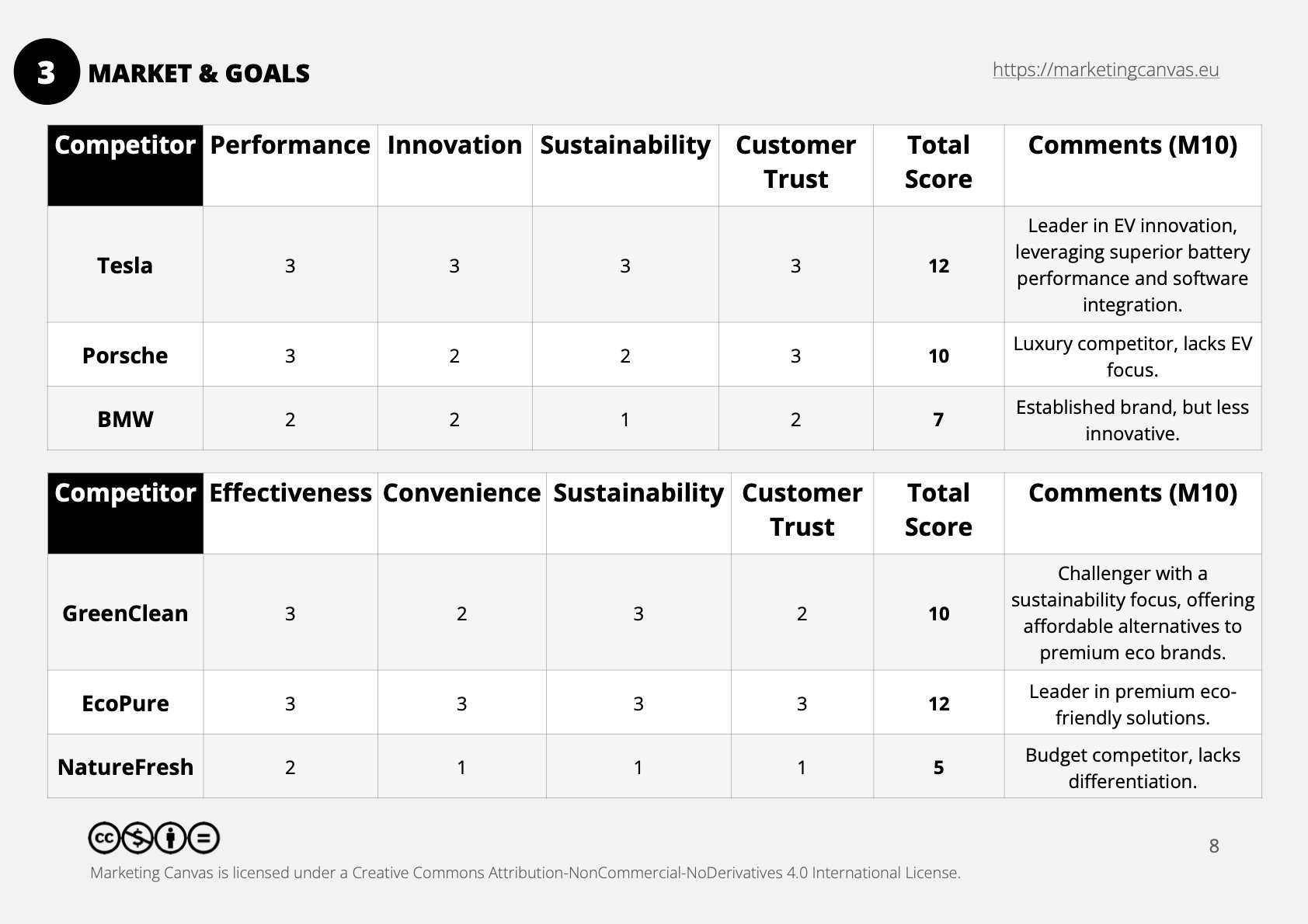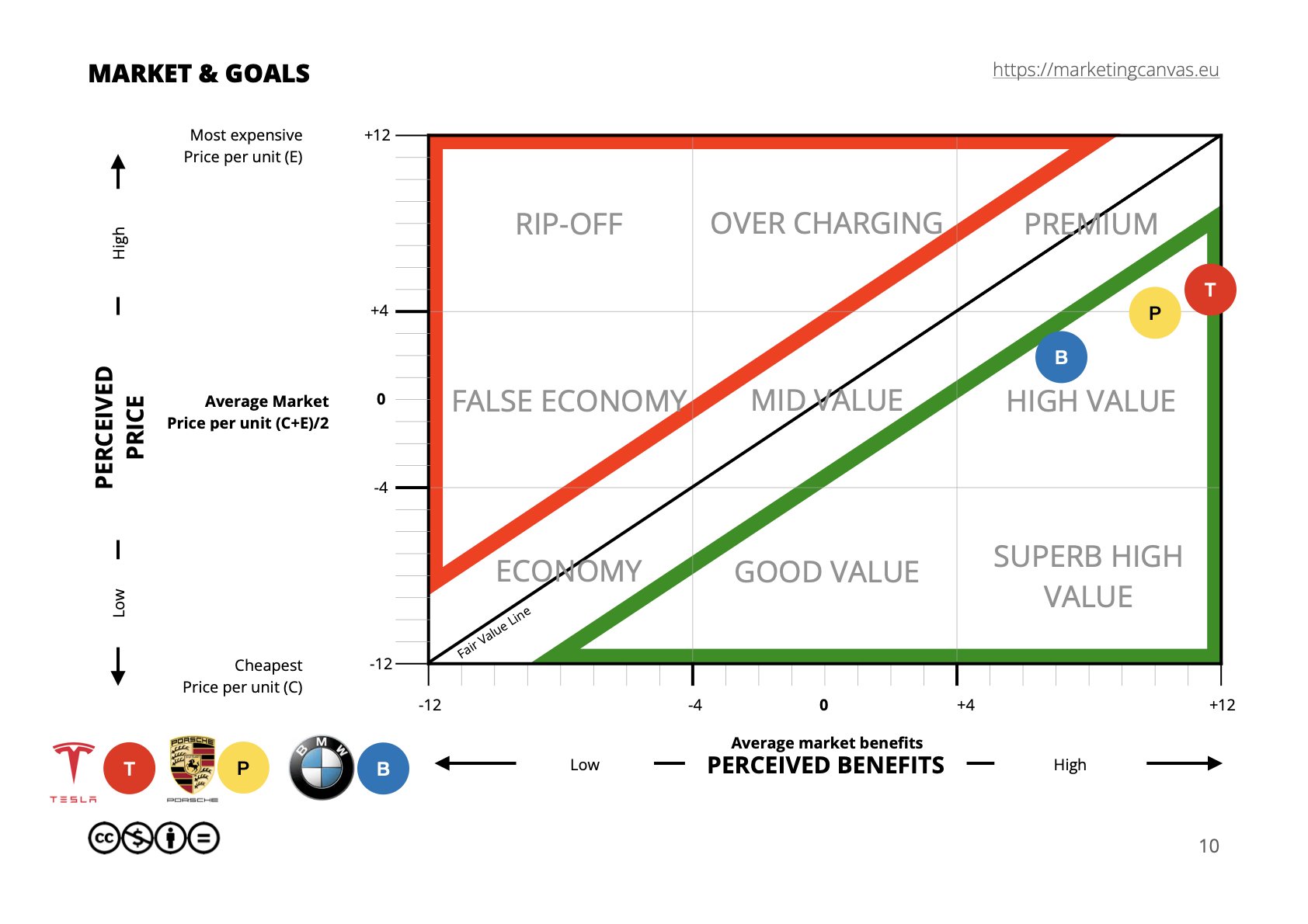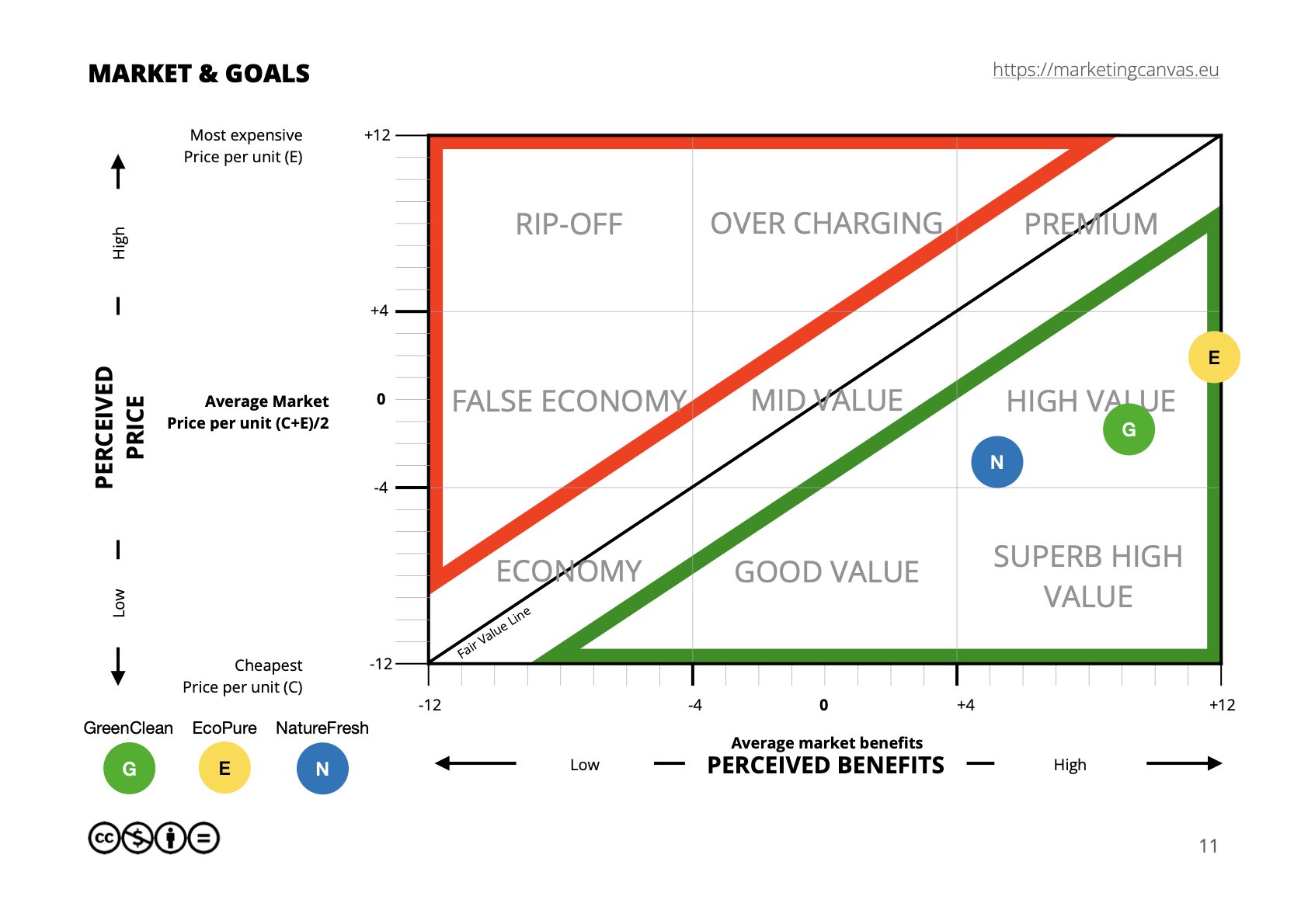Understanding your competitive landscape is essential for positioning your product or service effectively. By evaluating your competitors’ strengths and weaknesses, you gain insights into where your brand stands and how to differentiate yourself. This post explores how to analyze competitors in terms of pricing and benefits, providing examples from Tesla and GreenClean to illustrate the process.
Step 1: Identify your competitors (M6)
Competitors in any market typically fall into one of several categories based on their positioning and market strategy, particularly in how they align with key benefits identified in your market. Understanding these roles provides a framework for evaluating competitors effectively:
Leader: Excels across multiple key benefits, often setting industry standards. Leaders tend to dominate on aspects like performance, innovation, and brand trust.
Challenger: Focuses on select benefits to compete directly with leaders, often balancing affordability with strong perceived benefits.
Game Changer: Disrupts the market by emphasizing new or underserved benefits, redefining customer expectations (e.g., sustainability or traceability).
Follower: Mimics the offerings of leaders or challengers without significant differentiation, usually relying on competitive pricing.
Niche Player: Excels in one or two highly specific benefits, targeting a distinct audience or segment.
Begin by identifying your key competitors. For each, gather the following information:
Price per unit (M7): The actual cost of their product or service. Identify their market role (e.g., leader, challenger, game changer).
Perceived price (M8): How customers perceive their pricing relative to competitors.
Perceived benefits (M9): How well competitors perform across key benefits that matter to customers.
Comments (M10): Observations on competitors’ positioning, strengths, or weaknesses.
This forms the foundation for understanding how your offering compares.
Step 2: Analyze perceived price (M8)
Price isn’t just about numbers; it’s about perceived value. Customers may pay a premium for products they see as more valuable. Use the following formula to calculate perceived price:
Formula for perceived price (M8):
M8=24(E−C)×(M7−C)−12
E: Maximum price per unit in the market.
C: Lowest price per unit in the market.
M7: Your product's price per unit.
This formula provides a score between -12 and +12, helping you understand how your pricing is perceived.
Example: Tesla model S (M7: Leader)
Maximum price (E): €120,000
Lowest price (C): €50,000
Tesla model S price (M7): €100,000
M8 = (24)/{120,000 - 50,000} x (100,000 - 50,000) - 12 = +4.8
Tesla’s perceived price is higher than average, reflecting its luxury positioning.
Example: GreenClean (M7: Challenger)
Maximum price (E): €15
Lowest price (C): €6
GreenClean price (M7): €10
M8 = (24)/{15 - 6} x (10 - 6) - 12 = -1.33
GreenClean’s perceived price is lower, appealing to price-sensitive customers.
Step 3: Evaluate perceived benefits (M9)
To calculate perceived benefits, assess competitors across key benefits (identified earlier in your analysis). For each benefit, score competitors on a scale of -3 (completely disagree) to +3 (completely agree).
Competitor comments (M10) should play a critical role in interpreting perceived benefits. For example, understanding why a competitor excels in specific areas can highlight strategic opportunities or challenges for your brand. Comments might also identify potential collaboration opportunities or gaps to address in your own offering.
Example : Tesla vs. competitors (M9)
Performance
Innovation
Sustainability
Customer Trust
Example Table: GreenClean vs. Competitors (M9)
Effectiveness
Convenience
Sustainability
Customer Trust
Step 4: Compare and interpret results
With perceived price and perceived benefits calculated, create a summary table to identify where you excel or need improvement.
Example : Tesla vs. competitors (M10)
Tesla: Leader in EV innovation, leveraging superior battery performance and software integration.
Porsche: Luxury competitor, lacks EV focus.
BMW: Established brand, but less innovative.
Example: GreenClean vs. Competitors (M10)
Greenclean: Challenger with a sustainability focus, offering affordable alternatives to premium eco brands.
EcoPure: Leader in premium eco-friendly solutions.
NatureFresh: Budget competitor, lacks differentiation.
Final thoughts
Understanding your competitors goes beyond pricing and benefits. This process helps identify gaps in the market, refine your positioning, and strengthen your value proposition. By analyzing perceived price and benefits, you can develop strategies that resonate with your target audience while staying ahead of competitors.
As seen with Tesla, a high perceived price can align with high perceived benefits to justify a premium position. Similarly, GreenClean shows how affordability and sustainability can differentiate a product in a price-sensitive market. Use these methods to assess your landscape and uncover opportunities to lead.
What strategies have worked for you in understanding competitors? Share your experiences and insights in the comments!
















